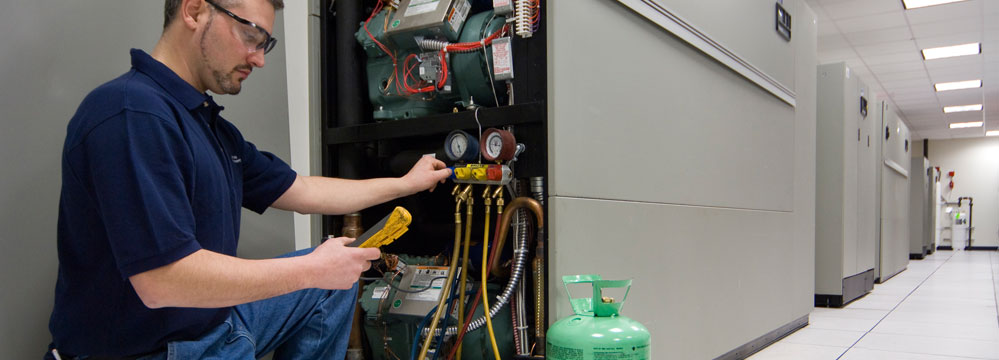The Basics of IT Planning
IT planning is often neglected by businesses until it is too late, but proper IT planning can save a business time, money and hassles in the future.

Source: Pressmaster / Dreamstime.com
When it comes to IT planning, it seems that many organizations just wing it, making things up as they go along and adding or upgrading only when necessary — often, only when equipment has failed and needs replacing, or during some other sort of technology-related crisis. As anyone in IT knows, this is far from a great IT management strategy.
The idea behind an IT plan is to acquire and optimally utilize all hardware and software resources in an organization, and an IT plan should ideally be aligned with the organization’s business goals. It takes time to create an IT plan because there are so many things to be taken into account. The goals of an IT plan come from the top brass of an organization, including the chief information officer (CIO) and the chief technology officer (CTO). A good plan not only helps an organization reach its business goals, but also helps it prevent issues. An IT plan can help an organization reduce dependencies and ensure business continuity, optimally utilize resources, avoid crises, save costs and improve productivity.
Not Just About Hardware and Software
On the face of it, an IT plan may seem to concern only hardware and software resources, but it is much more than that. Basically, an IT plan should cover the following aspects of a business:
- Human capital management — Human resources in an organization are viewed as an asset which must be managed well. An IT plan needs to make sure that the organization is able to manage its human assets with the help of technology, hardware and software.
- Enterprise risk management — An organization needs to prepare and prevent issues that can adversely impact its assets and earnings. An IT plan needs to account for the activities it needs to undertake in order to prepare for eventualities and prevent complications.
- Cost management — Cost management is a broad activity and an IT plan is an important subset of that. How much a company is able to control its costs depends a lot on the hardware and software policy and its risk management policy.
- Technology management — An IT plan needs to comprise things such as technology planning, support, disaster recovery, project management, network management, database services, security, and document services such as document formatting, e-billing, and mailing and mass printing.
- Hardware and software management — An IT plan needs to comprise details such as hardware and software acquisition, specifications and configurations, license issues, cost and security issues. It is not uncommon for hardware and software policies to intersect with technology management.
- Vendor management — IT plans need to have a provision for vendor management. This activity includes, but is not limited to, third-party service provider identification, participating in legal agreements, enforcement of agreements and day-to-day vendor management activities.
Why Do You Need an IT Plan?
An IT plan can significantly contribute to the business goals of an organization. Without an IT plan, an organization will be exposed to big risks, but with a plan, it can experience better business processes, improved productivity and reduced risks. Here are a few reasons you should have an IT plan in place:
- Choosing hardware and software for your organization can be a complex and daunting task. Without careful planning, it is quite possible to choose the wrong hardware and software, which can prove to be a costly and risk-prone proposition for your organization. An IT plan helps you choose hardware and software based on your organization’s needs and does its best to cover all possible eventualities.
- You can brainstorm and identify economical and efficient hardware and software alternatives on the market. Planning helps you carefully identify good, economical options and avoid more costly and less productive options.
- You can avoid crises such as data theft, viruses, hacking attacks and data loss. Inadequate technology can leave your data vulnerable to loss or corruption. That can lead to additional complications such as legal issues. IT plans help you carefully identify the right defense against data theft and data loss.
- Improve productivity by reducing hardware and software issue response time, improving issue resolution accuracy and accurate time reporting, among other things.
- Lenders are more likely to provide funding when you demonstrate concrete business plans and road maps that include IT plans. From the perspective of the lender, sound plans improve the possibility of profitability and repayment.
Typical Components of an IT Plan
As already should be clear, an IT plan is a comprehensive — and usually complex — document covering a myriad of things. It also must be noted that IT plans will vary across organizations depending on requirements and situations. Therefore, IT plans can be wildly different depending on industry, size of the organization, business goals and a host of other factors.
Getting Information
An IT plan will be always driven by the goals and principles of the organization, not the other way around. So, start by getting information on the principles, values, mission and goals of the organization. This information provides the broad guidelines for framing an IT policy. If there are no defined business goals or principles, departments can have their individual business goals, revenue, recruitment and sales targets, acquisition or partnership plans and cost reduction plans. These details give you some ideas on which you can start framing your IT plan.
When you get down to creating an IT plan, you need to keep existing resources in mind. You can create easy-to-fill-in templates and circulate them among departments so that they are able to provide their specific requirements in terms of hardware and software. The main objective in mind should be to support the business.
Data Protection and Risk Management
Data protection and crisis management are two of the basic tenets of an IT plan. Attacks are so common and varied these days that it is not a question of whether you can totally prevent attacks, but how you can limit those attacks. To do this, you may consider hosting servers that are externally facing in an outsourced data center. Remove all unnecessary applications and services from the server because when a problem arises, the hacker will not be able to exploit the redundant systems to enter your network. Make sure that all security patches or updates are applied on a regular basis. Lastly, whenever you have deployed a server or any other system, do not forget to change the default settings provided by the manufacturer — these settings are common knowledge, especially to hackers. To manage risks due to data loss, have reliable backup systems.
Human Capital Management
This includes having good HCM systems, timesheet reporting systems, appraisal and review support systems and so on. The idea is to have a set of systems that enable human resources to submit and retrieve data easily. Good HCM systems also contribute a lot towards good human resources processes.
Vendor Management
Vendor management is all about identifying vendors or third-party providers who would be a good fit for your business and your needs. You should carefully draft agreements and provisions, and make sure that the service provider is honoring the provisions appropriately. This includes hardware and software supply, Internet services and other services. The plan should include day-to-day activities as well as monitoring.




